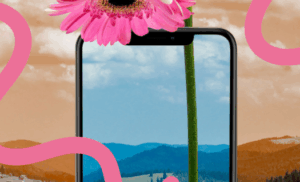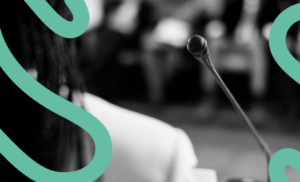Near the Santiago Bernabéu, next to the Paseo de la Castellana, Joan Laporta greets the people of Madrid with a provocative message: “I’m looking forward to seeing you again”. The face of the lawyer, former president of FC Barcelona and candidate to return to the presidency of the club, occupies the entire façade of a building next to Real Madrid’s football stadium. Few will have seen him on the street. Most of us have met him through social networks first and the media later. DOOH, an acronym for Digital Out of Home or digital signs and signage, has ended up becoming a conventional banner. [Updated: January 4, 2021].
Since the end of the mandatory confinement to reduce the consequences of the COVID-19 pandemic in Spain was in sight, we have experienced the greatest creative explosion in outdoor advertising. Just as QR codes were resurrected from the drawer of outdated technologies thanks to the need for contactless solutions, gigantic advertisements on construction scaffolding have found their own particular Golden Age. If it is precisely now that we should spend less time going in and out of the house, why this support and why now?
Since the end of the confinement, we have experienced the greatest creative explosion in outdoor advertising
Large advertising has sought to capture the attention of mass audiences for its spectacularity, but not for its segmentation capacity. Until now, the only way to choose the public was to decide the location: the neighborhood, the building, the shape of the space… Until a few years ago, a canvas of these characteristics was a visibility cannon shot designed to last in the memory of the casual passerby. If you weren’t there and you didn’t see it often, the poster didn’t have its effect.
Netflix leads the way
But a few years ago Netflix arrived and changed the rules of the game. In 2016, its promotion of the series “Narcos” with the slogan “Oh, white Christmas” in Madrid’s Puerta del Sol and the face of drug lord Pablo Escobar shook up the industry. Black humor, provocation, and timing were the cards played by the company to target its true audience: carefree, tech-savvy, open to mass consumption of audiovisual content and not to conventional media. The image went viral on social media and, from there, quickly made headlines.
Netflix repeated the formula shortly afterwards, playing another key card, topicality. With a “Be strong. Narcos is back ”, he alluded to the trial for box B of the PP and the messages from Mariano Rajoy to Luis Bárcenas. Ephemeral advertising for ephemeral channels, social networks.
Netflix was the foot in the door so that in a disastrous 2020 in every way, a good number of advertisers launched themselves to lose their fear of controversy. If consumers are now spending more time online than ever before, let’s give them images and experiences they want to see and share. Because it is not the same for a brand to upload a photo of its campaign to its Instagram profile than to place that image in a public space. What is the difference? That the diffusion, in the second case, is provided by the user. It gives you credibility, neutrality and veracity. In the midst of the digital age, the campaign on an urban banner becomes the property of the viewer. It´s a perfect combo
In the midst of the digital age, the campaign on an urban banner becomes the property of the viewer
Wave of campaigns abroad
In recent months we have seen provocative campaigns of all colors. Animal Equality protested the raising of chickens on farms with a direct “They are touching our eggs.” El Pozo has allowed itself to stick its finger at 2020, while Pepsi hummed to Mariah Carey stating that “all I want for this Christmas is 2021.” El Tenedor took the opportunity of the context to remind us that the restrictions will leave the “in-laws” out of the family Christmas dinner.
With less luck, Amazon Prime Video pulled Fernando Simón and his invitation to influencers to raise awareness among the population to propose Borat as an alternative. Heura played its cards with a message that was as risky as it was debatable due to its figures – “A meat burger contaminates more than your car” – and ended up withdrawing it. And in a display of originality, Zalando displayed a poster in various European cities, “We will hug each other again”, which was drawn in front of the passers-by by well-known urban artists (in Madrid, the artist was Taquen).
The success of the format has been such that the Padre Group agency did not hesitate to join the wave to create an initiative, #LonaChallenge, to encourage any brand to create its own virtual canvas. Inspiration, creativity, impudence and a hybrid format (the physical made digital) came to put an end to the advertising year from a Christmas action designed to generate brand visibility.
The digitization of the streets was not, in the end, the incorporation of technological elements in the urban space or the connection of buildings with the Internet. It was the creation of original, surprising and funny scenes that pushed us to win the competition to share them before our friends did. Because if social networks need something, it’s creative material to spread. Outdoor advertising is giving it to you. And in what way.
If social networks need something, it is creative material to spread
Joan Laporta will continue smiling at the people of Madrid for a few more days, but he does not really look at them. He looks at Barça’s members, at his fans, and tells them that he does know where the club’s battle is and what its objectives are. The repercussion of this clever marketing campaign has digitized the message and, like a boomerang, has turned it into paper. The day after the coup, the canvas was front-page news in the daily El País.
Well played.










